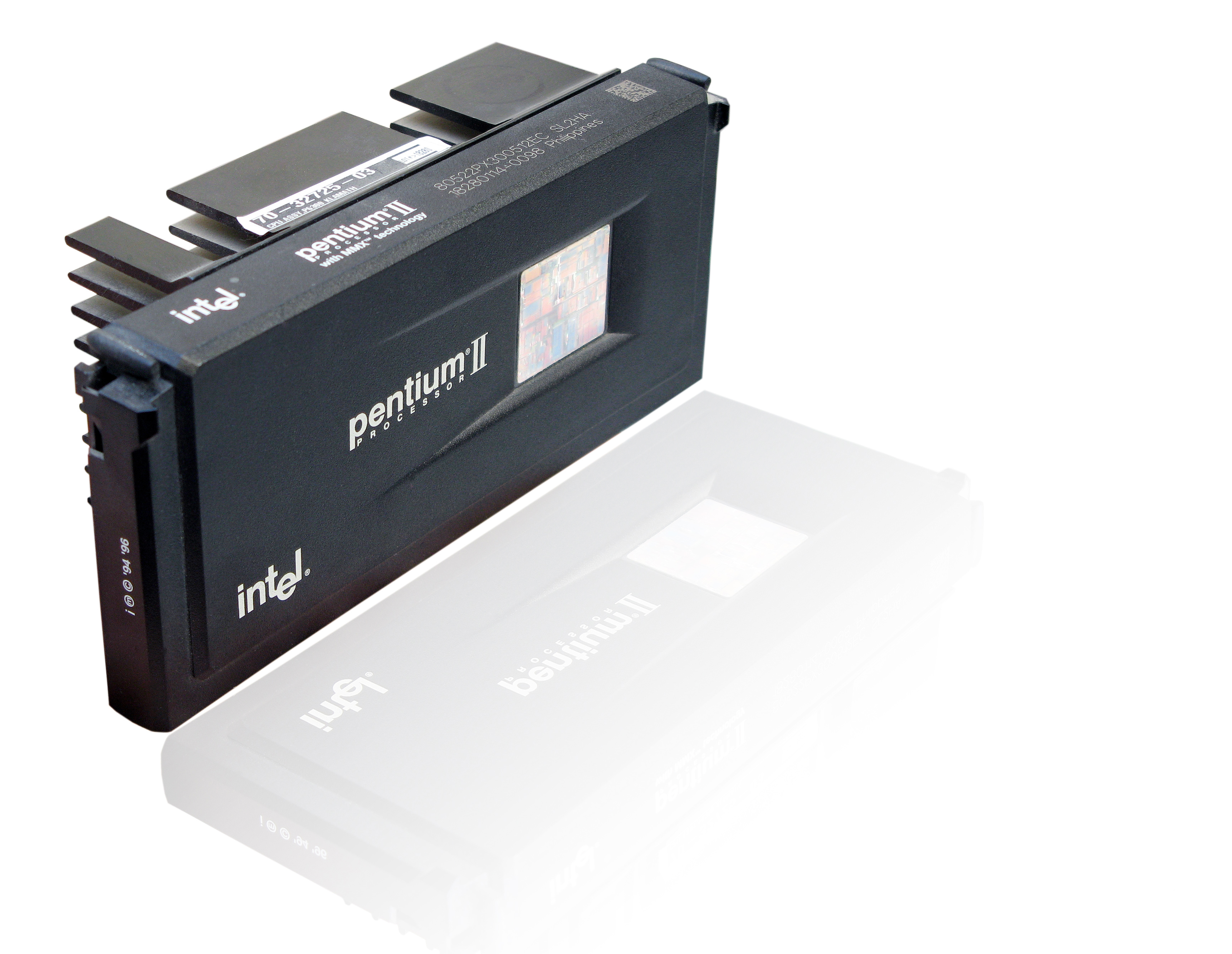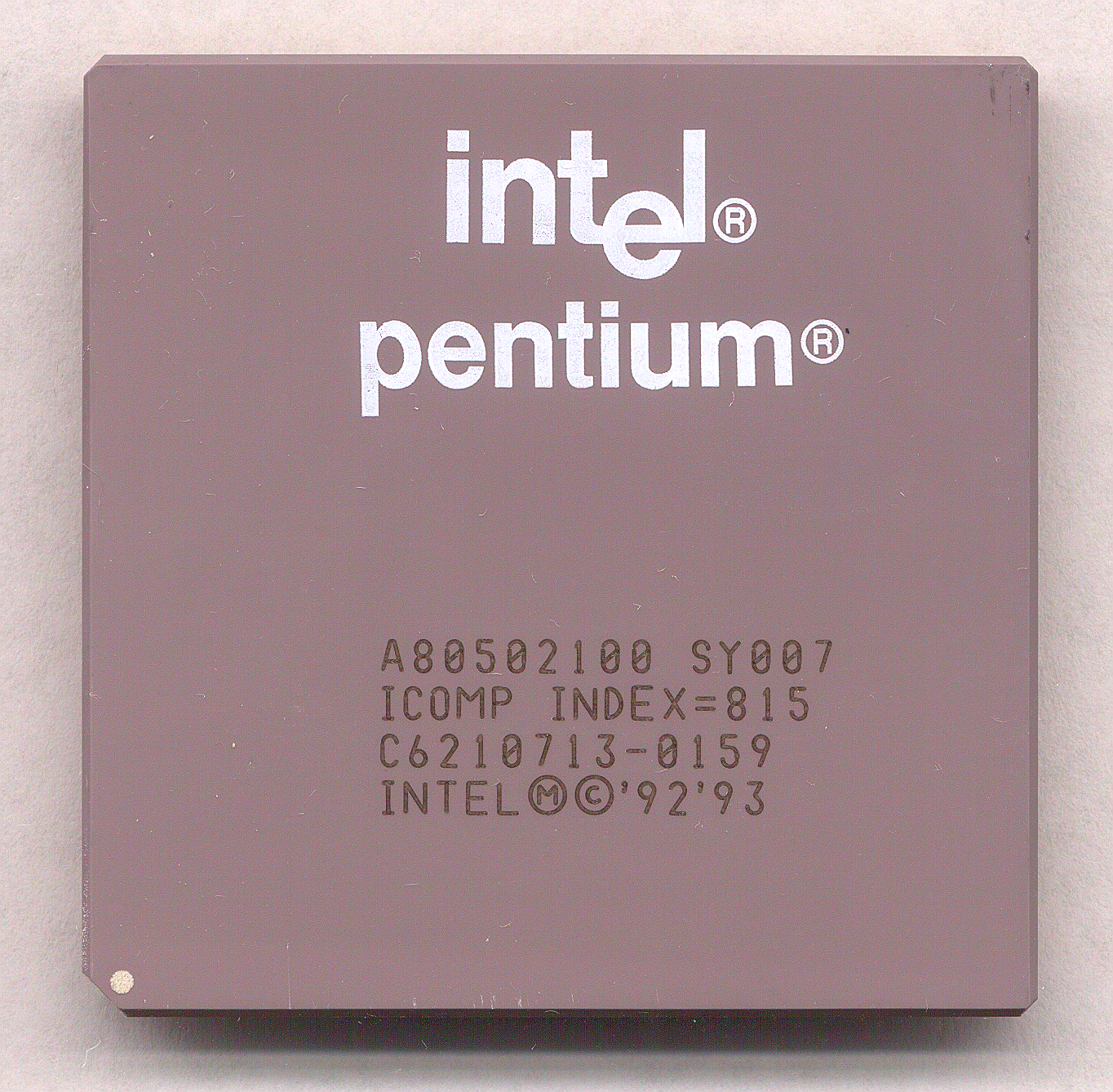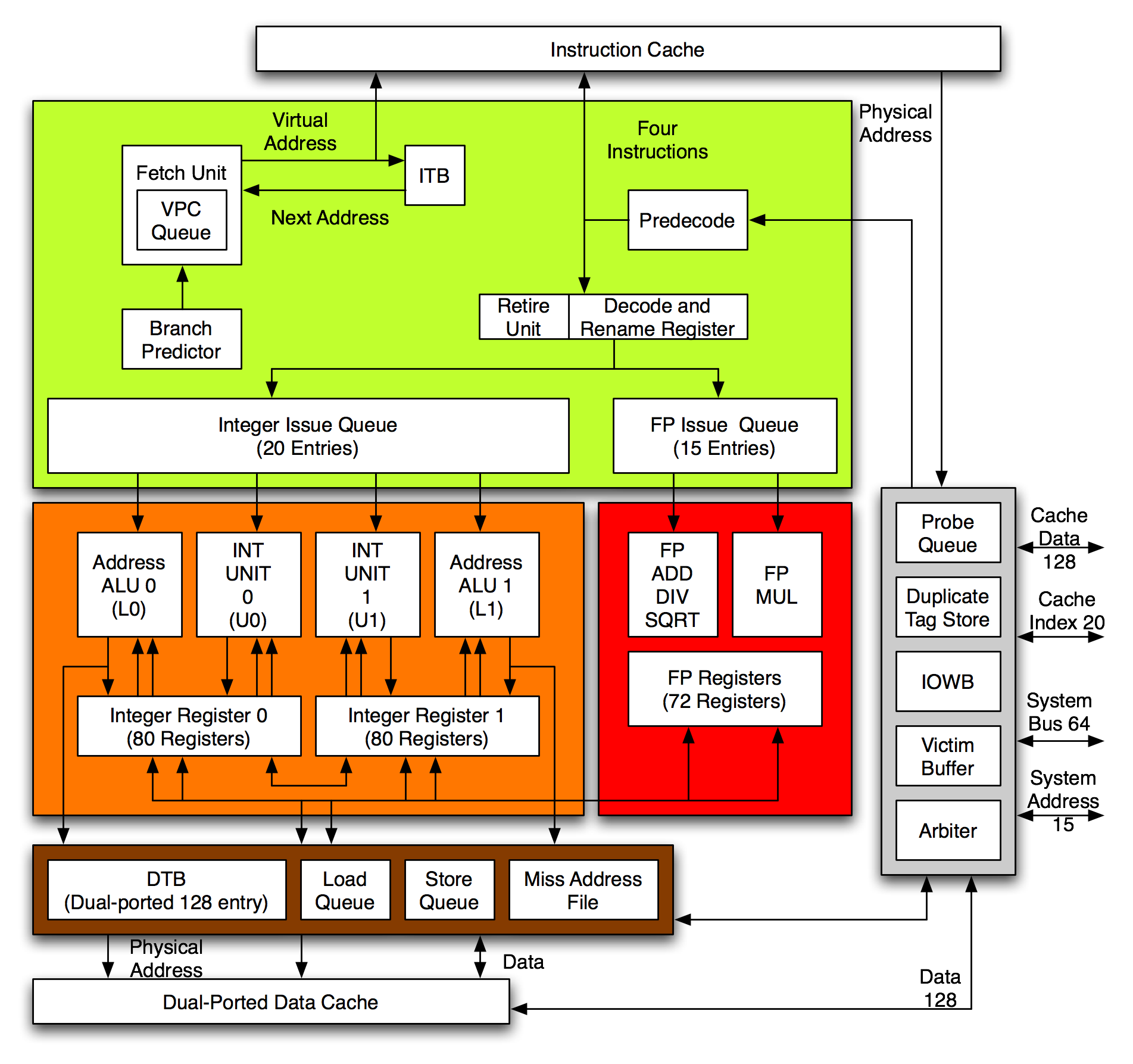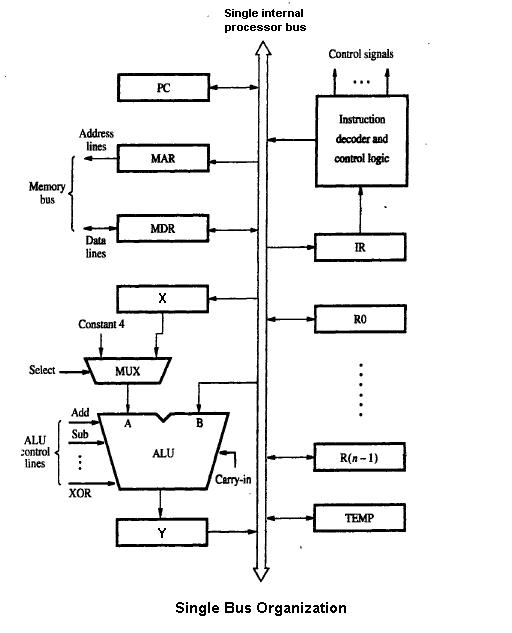|
Register File
A register file is an array of processor registers in a central processing unit (CPU). Register banking is the method of using a single name to access multiple different physical registers depending on the operating mode. Modern integrated circuit-based register files are usually implemented by way of fast static RAMs with multiple ports. Such RAMs are distinguished by having dedicated read and write ports, whereas ordinary multiported SRAMs will usually read and write through the same ports. The instruction set architecture of a CPU will almost always define a set of registers which are used to stage data between memory and the functional units on the chip. In simpler CPUs, these ''architectural registers'' correspond one-for-one to the entries in a physical register file (PRF) within the CPU. More complicated CPUs use register renaming, so that the mapping of which physical entry stores a particular architectural register changes dynamically during execution. The register fil ... [...More Info...] [...Related Items...] OR: [Wikipedia] [Google] [Baidu] |
Processor Register
A processor register is a quickly accessible location available to a computer's processor. Registers usually consist of a small amount of fast storage, although some registers have specific hardware functions, and may be read-only or write-only. In computer architecture, registers are typically addressed by mechanisms other than main memory, but may in some cases be assigned a memory address e.g. DEC PDP-10, ICT 1900. Almost all computers, whether load/store architecture or not, load data from a larger memory into registers where it is used for arithmetic operations and is manipulated or tested by machine instructions. Manipulated data is then often stored back to main memory, either by the same instruction or by a subsequent one. Modern processors use either static or dynamic RAM as main memory, with the latter usually accessed via one or more cache levels. Processor registers are normally at the top of the memory hierarchy, and provide the fastest way to access data. ... [...More Info...] [...Related Items...] OR: [Wikipedia] [Google] [Baidu] |
Bit-level Parallelism
Bit-level parallelism is a form of parallel computing based on increasing processor word size. Increasing the word size reduces the number of instructions the processor must execute in order to perform an operation on variables whose sizes are greater than the length of the word. (For example, consider a case where an 8-bit processor must add two 16-bit integers. The processor must first add the 8 lower-order bits from each integer, then add the 8 higher-order bits, requiring two instructions to complete a single operation. A 16-bit processor would be able to complete the operation with single instruction.) Originally, all electronic computers were serial (single-bit) computers. The first electronic computer that was not a serial computer—the first bit-parallel computer—was the 16-bit Whirlwind from 1951. From the advent of very-large-scale integration (VLSI) computer chip fabrication technology in the 1970s until about 1986, advancements in computer architecture were done by i ... [...More Info...] [...Related Items...] OR: [Wikipedia] [Google] [Baidu] |
Micro-operations
In computer central processing units, micro-operations (also known as micro-ops or μops, historically also as micro-actions) are detailed low-level instructions used in some designs to implement complex machine instructions (sometimes termed macro-instructions in this context). Usually, micro-operations perform basic operations on data stored in one or more registers, including transferring data between registers or between registers and external buses of the central processing unit (CPU), and performing arithmetic or logical operations on registers. In a typical fetch-decode-execute cycle, each step of a macro-instruction is decomposed during its execution so the CPU determines and steps through a series of micro-operations. The execution of micro-operations is performed under control of the CPU's control unit, which decides on their execution while performing various optimizations such as reordering, fusion and caching. Optimizations Various forms of μops have long bee ... [...More Info...] [...Related Items...] OR: [Wikipedia] [Google] [Baidu] |
MMX (instruction Set)
MMX is a ''single instruction, multiple data'' (SIMD) instruction set architecture designed by Intel, introduced on January 8, 1997 with its Pentium P5 (microarchitecture) based line of microprocessors, named "Pentium with MMX Technology". It developed out of a similar unit introduced on the Intel i860, and earlier the Intel i750 video pixel processor. MMX is a processor supplementary capability that is supported on IA-32 processors by Intel and other vendors . The New York Times described the initial push, including Super Bowl advertisements, as focused on "a new generation of glitzy multimedia products, including videophones and 3-D video games." MMX has subsequently been extended by several programs by Intel and others: 3DNow!, Streaming SIMD Extensions (SSE), and ongoing revisions of Advanced Vector Extensions (AVX). Overview Naming MMX is officially a meaningless initialism trademarked by Intel; unofficially, the initials have been variously explained as standing fo ... [...More Info...] [...Related Items...] OR: [Wikipedia] [Google] [Baidu] |
Pentium
Pentium is a brand used for a series of x86 architecture-compatible microprocessors produced by Intel. The original Pentium processor from which the brand took its name was first released on March 22, 1993. After that, the Pentium II and Pentium III were released. In their form , Pentium processors are considered entry-level products that Intel rates as "two stars", meaning that they are above the low-end Atom and Celeron series, but below the faster Intel Core lineup, and workstation/server Xeon series. , Pentium processors have little more than their name in common with earlier Pentiums, which were Intel's flagship processor for over a decade until the introduction of the Intel Core line in 2006. They are based on both the architecture used in Atom and that of Core processors. In the case of Atom architectures, Pentiums are the highest performance implementations of the architecture. Pentium processors with Core architectures prior to 2017 were distinguished from the f ... [...More Info...] [...Related Items...] OR: [Wikipedia] [Google] [Baidu] |
Simultaneous Multithreading
Simultaneous multithreading (SMT) is a technique for improving the overall efficiency of superscalar CPUs with hardware multithreading. SMT permits multiple independent threads of execution to better use the resources provided by modern processor architectures. Details The term ''multithreading'' is ambiguous, because not only can multiple threads be executed simultaneously on one CPU core, but also multiple tasks (with different page tables, different task state segments, different protection rings, different I/O permissions, etc.). Although running on the same core, they are completely separated from each other. Multithreading is similar in concept to preemptive multitasking but is implemented at the thread level of execution in modern superscalar processors. Simultaneous multithreading (SMT) is one of the two main implementations of multithreading, the other form being temporal multithreading (also known as super-threading). In temporal multithreading, only one thread ... [...More Info...] [...Related Items...] OR: [Wikipedia] [Google] [Baidu] |
POWER8
POWER8 is a family of superscalar multi-core microprocessors based on the Power ISA, announced in August 2013 at the Hot Chips conference. The designs are available for licensing under the OpenPOWER Foundation, which is the first time for such availability of IBM's highest-end processors. Systems based on POWER8 became available from IBM in June 2014. Systems and POWER8 processor designs made by other OpenPOWER members were available in early 2015. Design POWER8 is designed to be a massively multithreaded chip, with each of its cores capable of handling eight hardware threads simultaneously, for a total of 96 threads executed simultaneously on a 12-core chip. The processor makes use of very large amounts of on- and off-chip eDRAM caches, and on-chip memory controllers enable very high bandwidth to memory and system I/O. For most workloads, the chip is said to perform two to three times as fast as its predecessor, the POWER7. POWER8 chips comes in 6- or 12-core variants; ... [...More Info...] [...Related Items...] OR: [Wikipedia] [Google] [Baidu] |
MIPS Technologies
MIPS Technologies, Inc., formerly MIPS Computer Systems, Inc., was an American fabless semiconductor design company that is most widely known for developing the MIPS architecture and a series of RISC CPU chips based on it. MIPS provides processor architectures and cores for digital home, networking, embedded, Internet of things and mobile applications. MIPS was founded in 1984 to commercialize the work being carried out at Stanford University on the MIPS architecture, a pioneering RISC design. The company generated intense interest in the late 1980s, seeing design wins with Digital Equipment Corporation (DEC) and Silicon Graphics (SGI), among others. By the early 1990s the market was crowded with new RISC designs and further design wins were limited. The company was purchased by SGI in 1992, by that time its only major customer, and won several new designs in the game console space. In 1998, SGI announced they would be transitioning off MIPS and spun off the company. Af ... [...More Info...] [...Related Items...] OR: [Wikipedia] [Google] [Baidu] |
SPARC
SPARC (Scalable Processor Architecture) is a reduced instruction set computer (RISC) instruction set architecture originally developed by Sun Microsystems. Its design was strongly influenced by the experimental Berkeley RISC system developed in the early 1980s. First developed in 1986 and released in 1987, SPARC was one of the most successful early commercial RISC systems, and its success led to the introduction of similar RISC designs from many vendors through the 1980s and 1990s. The first implementation of the original 32-bit architecture (SPARC V7) was used in Sun's Sun-4 computer workstation and server systems, replacing their earlier Sun-3 systems based on the Motorola 68000 series of processors. SPARC V8 added a number of improvements that were part of the SuperSPARC series of processors released in 1992. SPARC V9, released in 1993, introduced a 64-bit architecture and was first released in Sun's UltraSPARC processors in 1995. Later, SPARC processors were used in ... [...More Info...] [...Related Items...] OR: [Wikipedia] [Google] [Baidu] |
Alpha 21264
The Alpha 21264 is a Digital Equipment Corporation RISC microprocessor launched on 19 October 1998. The 21264 implemented the Alpha instruction set architecture (ISA). Description The Alpha 21264 is a four-issue superscalar microprocessor with out-of-order execution and speculative execution. It has a peak execution rate of six instructions per cycle and could sustain four instructions per cycle. It has a seven-stage instruction pipeline. Out of order execution At any given stage, the microprocessor could have up to 80 instructions in various stages of execution, surpassing any other contemporary microprocessor. Decoded instructions are held in instruction queues and are issued when their operands are available. The integer queue contained 20 entries and the floating-point queue 15. Each queue could issue as many instructions as there were pipelines. Ebox The Ebox executes integer, load and store instructions. It has two integer units, two load store units and two integer r ... [...More Info...] [...Related Items...] OR: [Wikipedia] [Google] [Baidu] |
Datapath
A datapath is a collection of functional units such as arithmetic logic units or multipliers that perform data processing operations, registers, and buses. Along with the control unit it composes the central processing unit (CPU). A larger datapath can be made by joining more than one datapaths using multiplexers. A data path is the ALU, the set of registers, and the CPU's internal bus(es) that allow data to flow between them. The simplest design for a CPU uses one common internal bus. Efficient addition requires a slightly more complicated three-internal-bus structure. Many relatively simple CPUs have a 2-read, 1-write register file connected to the 2 inputs and 1 output of the ALU. During the late 1990s, there was growing research in the area of reconfigurable datapaths—datapaths that may be re-purposed at run-time using programmable fabric—as such designs may allow for more efficient processing as well as substantial power savings. Finite state machine with datapat ... [...More Info...] [...Related Items...] OR: [Wikipedia] [Google] [Baidu] |
Low-power Electronics
Low-power electronics are electronics, such as notebook processors, that have been designed to use less electric power than usual, often at some expense. In the case of notebook processors, this expense is processing power; notebook processors usually consume less power than their desktop counterparts, at the expense of lower processing power. History Watches The earliest attempts to reduce the amount of power required by an electronic device were related to the development of the wristwatch. Electronic watches require electricity as a power source, and some mechanical movements and hybrid electromechanical movements also require electricity. Usually, the electricity is provided by a replaceable battery. The first use of electrical power in watches was as a substitute for the mainspring, to remove the need for winding. The first electrically powered watch, the Hamilton Electric 500, was released in 1957 by the Hamilton Watch Company of Lancaster, Pennsylvania. The first quartz ... [...More Info...] [...Related Items...] OR: [Wikipedia] [Google] [Baidu] |






